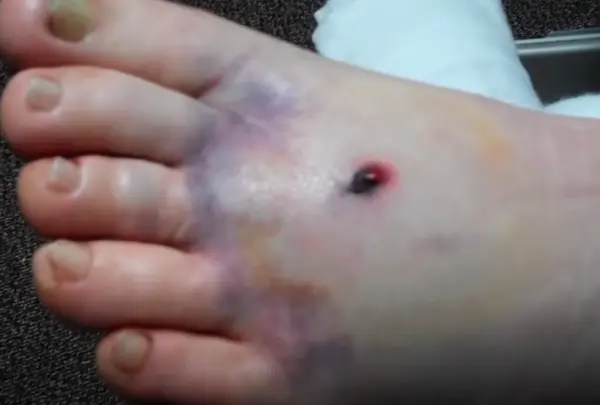Gunshot injuries can result in serious outcomes, such as nerve impairment. When a bullet enters the leg, it has the potential to harm the nerves, resulting in different forms of nerve damage. This article will delve into the kinds, extent, medical care, and impact on daily life of nerve damage in the leg caused by gunshot wound.
Types of Nerve Damage
- Neurapraxia: Neurapraxia is the least severe type of nerve injury, in which the nerve is stretched or compressed without being completely cut. It may result in temporary loss of feeling, weakened muscles, or paralysis. Fortunately, nerves typically recuperate naturally within a few weeks to a few months.
- Axonotmesis: This type of nerve injury is more serious, as it involves damage to the long extensions of nerve cells called axons, while the protective covering around the nerve remains undamaged. Axonotmesis can cause problems with both sensation and movement, leading to muscle weakness and shrinkage. In some cases, surgery may be necessary to fix the injured axons.
- Neurotmesis: This type of nerve injury is considered the most extreme, as it involves the complete separation of the nerve. To restore nerve function, surgical procedures like nerve grafting or nerve transfer are often necessary.
Severity of Nerve Damage
The extent of nerve damage in the leg resulting from gunshot wounds relies on multiple elements such as the type and position of the injury, the amount of tissue affected, as well as personal factors like age and general health. Seeking advice from a healthcare provider is crucial in order to precisely evaluate the severity of the nerve damage and establish a suitable course of treatment.
Treatment Options
The treatment for nerve damage in the leg caused by a gunshot wound is tailored to the severity and type of injury. Some commonly employed treatments include:
- Observation and Rehabilitation: In cases of neurapraxia, observation, and physical therapy to maintain muscle strength and prevent joint stiffness may be sufficient. Regular assessment is crucial to monitor progress.
- Surgical Intervention: For more severe nerve injuries like axonotmesis and neurotmesis, surgical repair may be required. Nerve grafting, nerve transfers, or other advanced surgical techniques can help restore nerve function and improve long-term outcomes.
- Pain Management: Nerve damage can cause chronic pain. Medications, nerve blocks, physical therapy, or alternative therapies like acupuncture may be used for pain relief.
Lifestyle Implications
Living with nerve damage in the leg caused by a gunshot wound can significantly impact an individual’s lifestyle. It is important to adapt and make necessary lifestyle changes, which may include:
- Mobility Aids: The use of assistive devices like crutches, canes, or wheelchairs may be necessary if there is significant leg weakness or paralysis.
- Physical Therapy: Regular physical therapy sessions can help improve muscle strength, coordination, and overall functional abilities.
- Psychological Support: Coping with the physical and emotional challenges of nerve damage can be overwhelming. Seeking support through counseling or support groups can be beneficial.
- Assistive Devices: Depending on the severity of nerve damage, using braces, splints, or orthotic devices can provide stability and support to affected leg muscles and joints.
Conclusion
Nerve damage in the leg caused by a gunshot wound can severely affect an individual’s quality of life. Understanding the types, severity, treatment options, and necessary lifestyle adjustments is crucial for those dealing with such injuries. Seeking medical attention promptly and following a comprehensive rehabilitation plan can optimize the chances of nerve function recovery and overall well-being.






